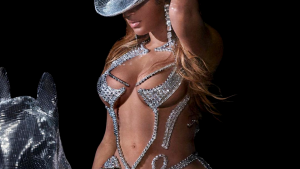As women of colour it’s hardly breaking news that there is a serious lack of representation of us in mainstream magazines.
A common red herring is the tendency to occasionally feature one image of the black woman, who, more often than not, is slim, lighter skin toned with straighter hair. A new study has attempted to back up this anecdotal truth with hard facts through an in-depth analysis of representation of black women in magazines.

The study analyzed appearance adverts and articles across eight issues of mainstream women’s magazines available in Britain (Elle and Vogue) and black women’s magazines (Essence and Ebony) from 2015 to 2016. The findings, while not surprising are certainly interesting.

The research from Leeds Beckett University, led by Dr Glen Jankowski, studied 539 images of black women in the magazines; 83% were young, 62% were slim, 66% had light skin, and 60% had straight hair. The continuous proliferation of this ideal will no doubt chip away at even the strongest resolved woman of colour, and contribute to putting pressure on her to entertain irrational thoughts of wanting to not only be slim and youthful but also to lighten her skin, to narrow her nose and to relax her hair.

In contrast, and unsurprisingly, there were more occurrences of diverse imagery in the black publications, for example, there were increased images of black women with heavier body shapes and with darker skin were featured. However, we black-focussed magazines, mustn’t be complacent in this area. Dr Jankowski warns: “Our research has shown that unrealistic appearance standards of black women are still prevalent and that even the more progressive publications like Essence and Ebony struggle to resist.”
I feel it’s important to recognise that there are numerous extenuating factors that need to be considered. We live in a predominately white society and we are the minority where people with Afro-Caribbean backgrounds account for about 4% of the UK population and people with Asian backgrounds about 9%. Also, it would be remiss to ignore the fact that most of the mainstream titles are white-owned; you could argue that people stick to what they know. It’s this recognition that inspired the birth of this publication, and the lack of representation and a voice has led to the creation of countless bloggers and platforms that centre on the black experience, which in my opinion, is the right way to go.
Creating our own narrative is vital and we shouldn’t be ‘satisfied’ with having an occasional image to represent us all. One darker skinned, afro haired black woman to account for 25% of the total coverage in the mainstream women’s magazines of the black woman is really not the way forward. That woman was US-based actress Lupita Nyong’o, who during that period had been signed as the face of Lancôme, a French subsidiary of cosmetic giant L’Oreal. As much as we admire and ‘Stan’ for Lupita, we want more representation and it’s up to us to do something about it.













3 comments
Hi Joy,
What a fantastic article! I was just wondering if you had a link or the name of the particular study?
Kind Regards
Hi Gemma,
Thanks for reading and glad you liked the piece. Find out more here: http: http: https://www.youtube.com/watch?v=aF8f5Z38tIg&feature=youtu.be